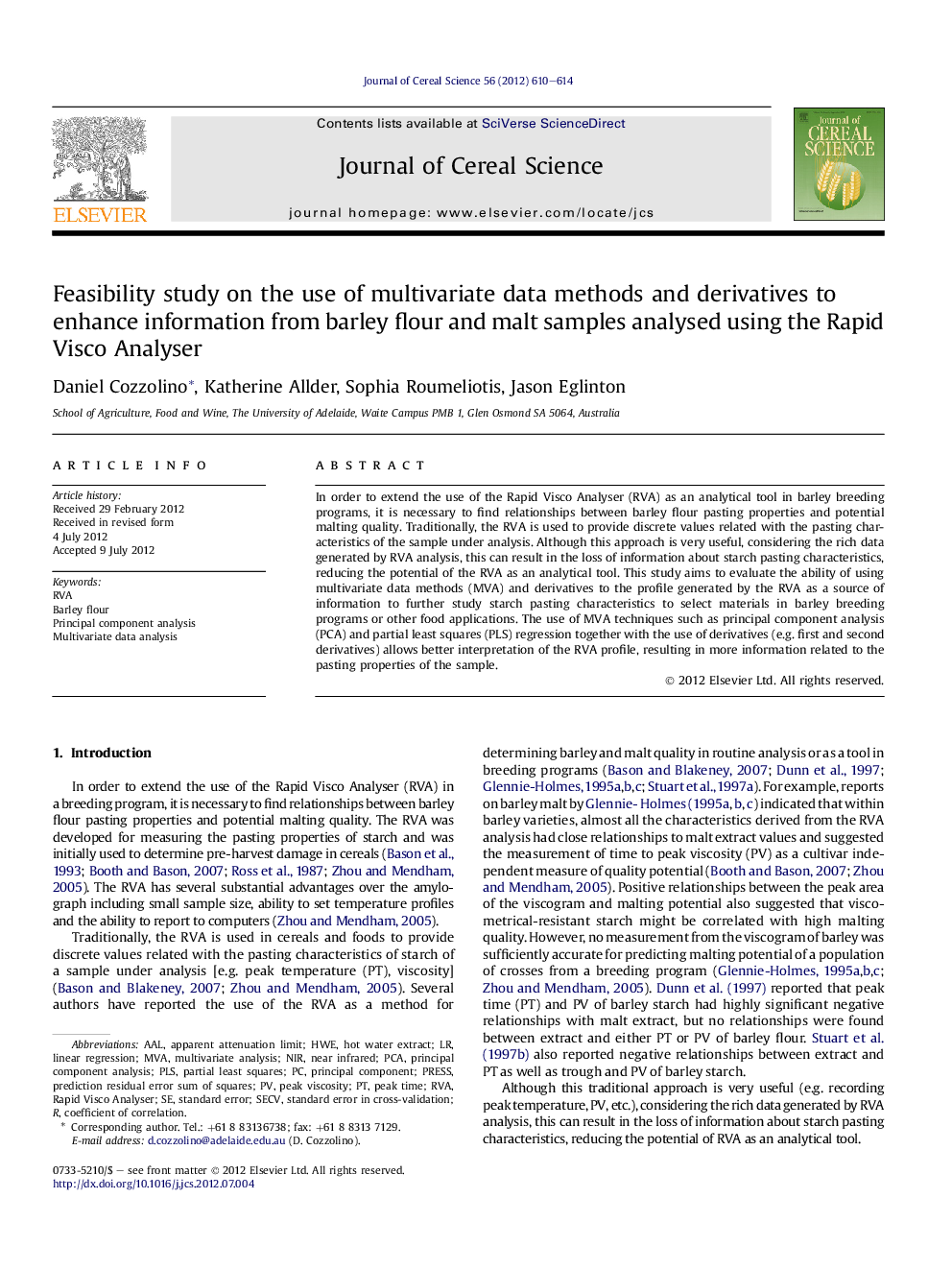| Article ID | Journal | Published Year | Pages | File Type |
|---|---|---|---|---|
| 4516131 | Journal of Cereal Science | 2012 | 5 Pages |
In order to extend the use of the Rapid Visco Analyser (RVA) as an analytical tool in barley breeding programs, it is necessary to find relationships between barley flour pasting properties and potential malting quality. Traditionally, the RVA is used to provide discrete values related with the pasting characteristics of the sample under analysis. Although this approach is very useful, considering the rich data generated by RVA analysis, this can result in the loss of information about starch pasting characteristics, reducing the potential of the RVA as an analytical tool. This study aims to evaluate the ability of using multivariate data methods (MVA) and derivatives to the profile generated by the RVA as a source of information to further study starch pasting characteristics to select materials in barley breeding programs or other food applications. The use of MVA techniques such as principal component analysis (PCA) and partial least squares (PLS) regression together with the use of derivatives (e.g. first and second derivatives) allows better interpretation of the RVA profile, resulting in more information related to the pasting properties of the sample.
► The use of derivatives and multivariate data analysis was explored to enhance data from RVA. ► First and second derivatives improved the data from the RVA. ► Partial least squares was applied to the RVA profile to predict quality parameters in barley.
